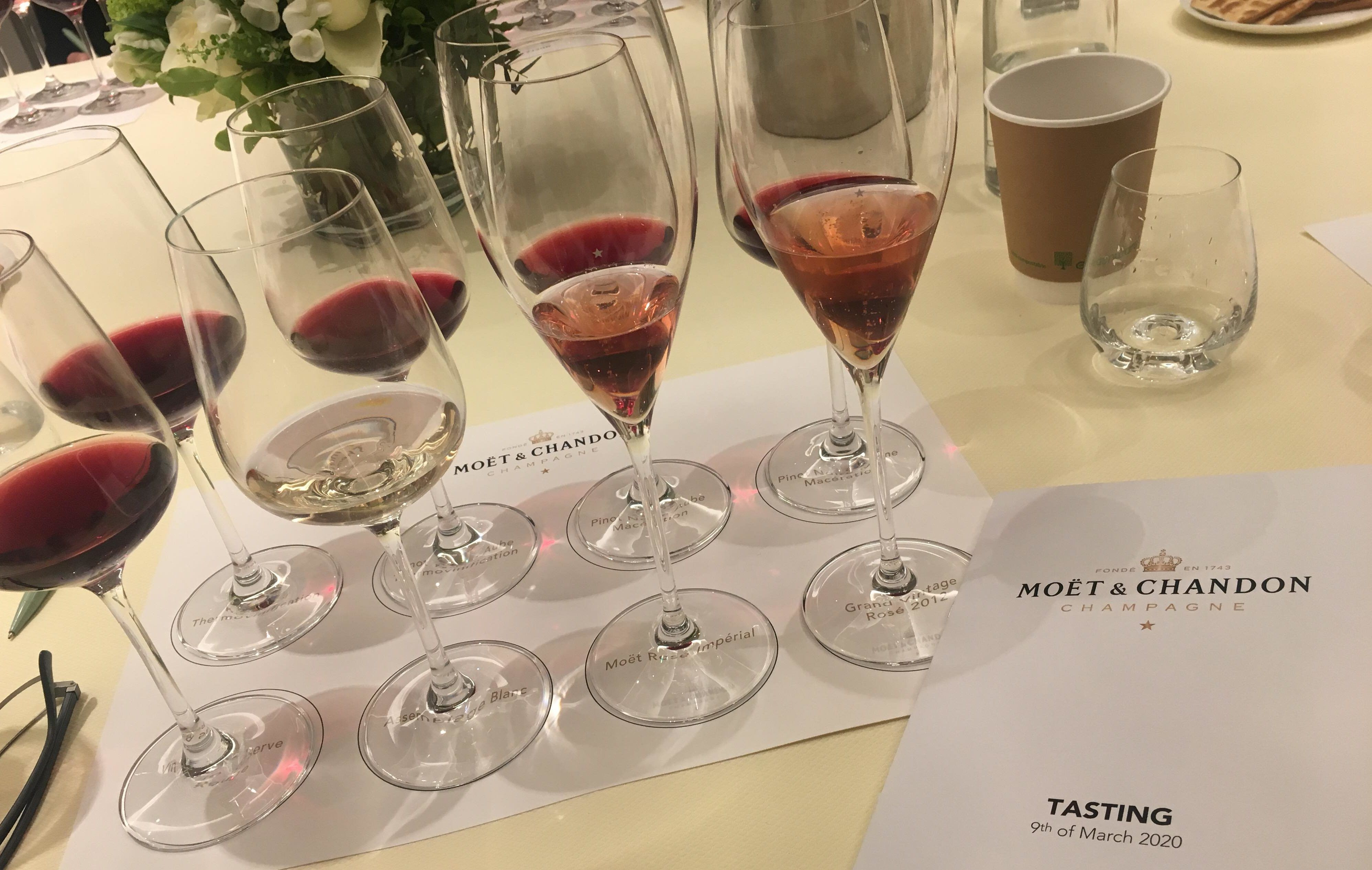“Harnessing thermovinification to make such fruity reds is their competitive advantage,” writes Krebiehl about Moët & Chandon rosé
“Welcome to a world premiere,” said Benoît Gouez, chef de cave at Moët & Chandon. He was in London for a tasting of the red base wines that are key to Moët & Chandon’s market-leading rosé Champagne range. “In the past we have done some base wine tastings, with one or two red wines, but this is the first time we organise a tasting of not all of our red wines, but at least of every style of our red wines. This tasting is to show the vision, philosophy and strategy behind our rosé Champagnes.”
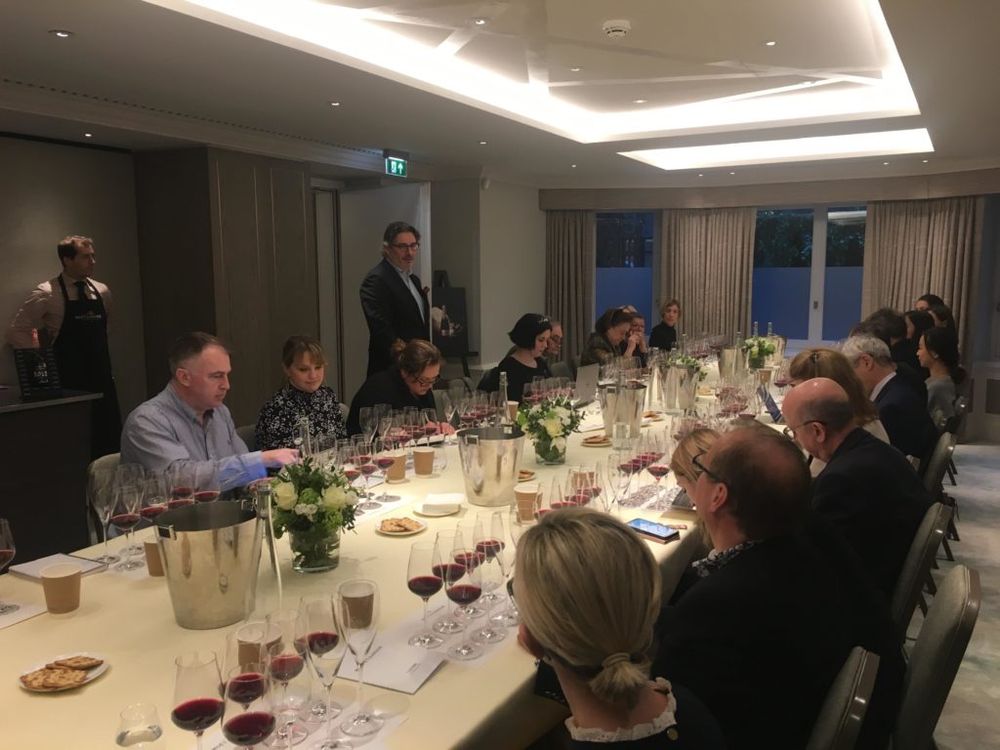
Gouez (standing) addressing the UK press, London, March 9, 2020
Gouez explained that Moët & Chandon with its Rosé Impérial is the market leader of the pink stuff in Champagne. While Moët’s records show that rosé has been made since at least the late 18thcentury – an order of 1796 ‘Rozé’ Champagne dating to 1801 is the proof – it never played a big role until the 1990s.
“In 1988 rosé production was 2-3 %, not only for Moët but across Champagne,” he said. “The biggest challenge for making rosé is making decent red wines in Champagne, because we don’t have the right climate, so historically it was only in the best vintages that we made these wines. For a long time we only had vintage rosé.”
The house then launched its Rosé Impérial in 1996 and has since added Nectar Impérial Rosé and Ice Impérial Rosé. These four wines (including Grand Vintage Rosé) today represent 20% of production, Gouez said. While nobody at Moët & Chandon ever reveals production figures, we know that they are in the millions – and making rosé on that scale thus requires serious amounts of red wine to provide that alluring and popular pink tinge.
Two wineries are thus dedicated to red wine production. One in Epernay which was “redeveloped” in 2006; another in the southern Pinot Noir stronghold of Champagne, the Aube, opened in 2014.
“The idea is to continue to diversify our grape supply,” Gouez said. “Both Pinot Noir and Pinot Meunier are vinified as red wines, more or less of each, depending on which is better suited in any particular year.” The vineyards where fruit is destined for the production of red wine are pruned shorter for lower yields: the aim is between eight to ten tons/ha whereas for white-vinified base wines yields of 11-12 tons/ha are fine. They are also harvested with a higher potential ABV of 11%.
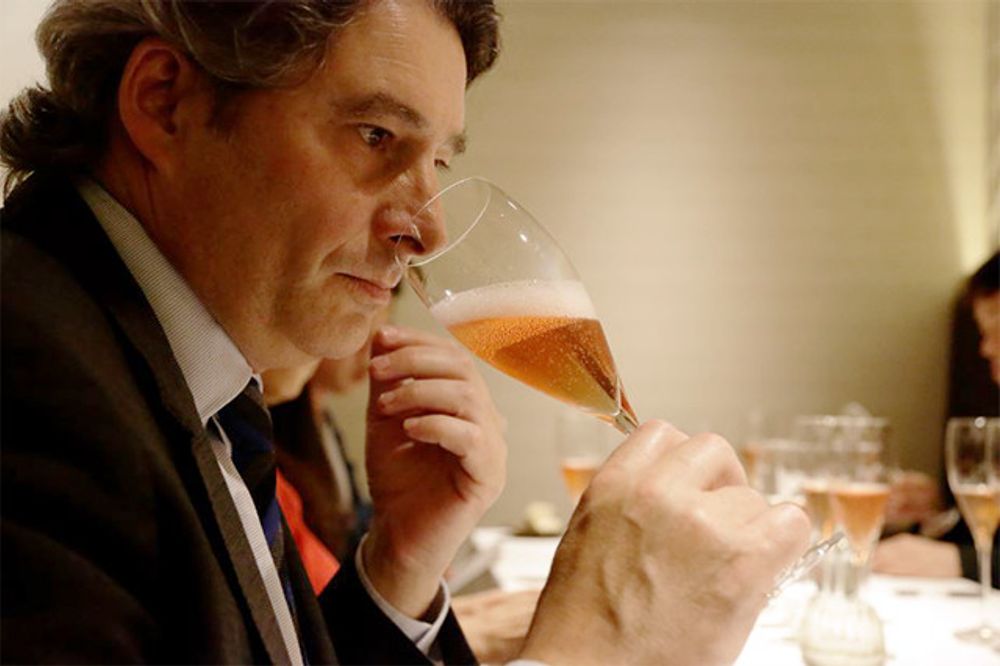
“As we don’t macerate, we have wines that are very light on the palate,” Benoît Gouez
What sets Moët & Chandon apart is their use of thermovinification.
Thermovinification is a technique developed in the 1970s to make wine from poor-quality red grapes. It works because heat disables the colour-destroying enzyme laccase present in botrytised grapes. Thermovinification thus has a bad name: it was and still is used to turn sub-standard, rot-affected grapes into easy-drinking reds. At Moët & Chandon, however, it is a way of producing the necessary amount of red base wines with very particular traits, or, as Gouez puts it: “A positive and premium way of using thermovinification – it’s a way to generate a certain profile and a certain style. We create nuances that help to keep the balance right and keep a consistent character.”
Gouez then explained the process: “We have dedicated plots in the vineyards. For Pinot Meunier it is the Vallée de la Marne from our own estate, for Pinot Noir it is in the Aube with contracted partners. We rely on our growers and set them targets in terms of maturity and quality,” he said.
Once harvested, the grapes are “destemmed and heated to 70°C. At this temperature two things will happen: proteins are degraded by heat, especially the botrytis enzymes. Also, the cells of the skins explode and we have access to most if not all anthocyanins and most of the aromatic precursors. We macerate for two hours and then we press. There is very little tannic extraction. There is a little settling, but all the vinification happens in liquid phase, there is no further contact with the skins at all. So we have a lot of control.”
He noted that these red wines are fermented at the same cool temperatures – at 18°C – as the white base wines. “The reason for this is that we discovered that we extract and then reveal a lot of thiol precursors.” Thiols are volatile, aromatic compounds which are, for example, largely responsible for the heady, leafy, tropical notes in Sauvignon Blanc. “We realised that in our Pinot Noir, Pinot Meunier and Chardonnay we have thiol precursors, expressions of 3 MH and 3MHA [3-mercaptohexanol and 3-mercaptohexyl acetate which are created during fermentation from precursors in the must]. It has become a signature of our rosé, we are the only ones to use this.”
Thermovinification thus allows high extraction of colour and flavour precursors with very little phenolic extraction. “As we don’t macerate, we have wines that are very light on the palate,” Gouez explained. “That is what we are looking for. In the case of Rosé Impérial we want to keep it very aperitif-like, we want to keep it as tender as possible, so we do that on purpose.”
The strategy works. Gouez noted that in the past, 25% of red wine was needed in the blend to produce a consistent and stable rosé colour in the finished Champagne. Today the percentage of red wine in Moët & Chandon’s rosé Champagnes is 9% for Grand Vintage and 13% for the non-vintage blends.
Maceration and vinification on skins
However, thermovinification is only one part of the game. Red wines are also made by maceration and vinification on skins. The wines destined for Grand Vintage Rosé are mostly sourced in Aÿ but also in Bouzy and Verzenay. The process is different, and grapes are usually sourced from older vines.
Gouez explained: “They are harvested at 12% ABV. We sort at picking, then again at a sorting table, the grapes are fully destemmed, and receive a short maceration of seven to eight days. We start first with pumping over, then plunging down, usually two to three times in the first two days, the idea is to extract what comes easily, but when we start tasting some greenness and harshness, we stop. We rack, we press, we centrifuge and then we inoculate for fermentation and malo-lactic fermentation.”
“Usually we produce 50% more volume than we need so we always have some extra Pinot Noir macerated that finishes up in the vintage Champagne. We want to be sure to have the choice in the end. This year we have made six tanks, four will be used. The rest will go into the Impérial.”
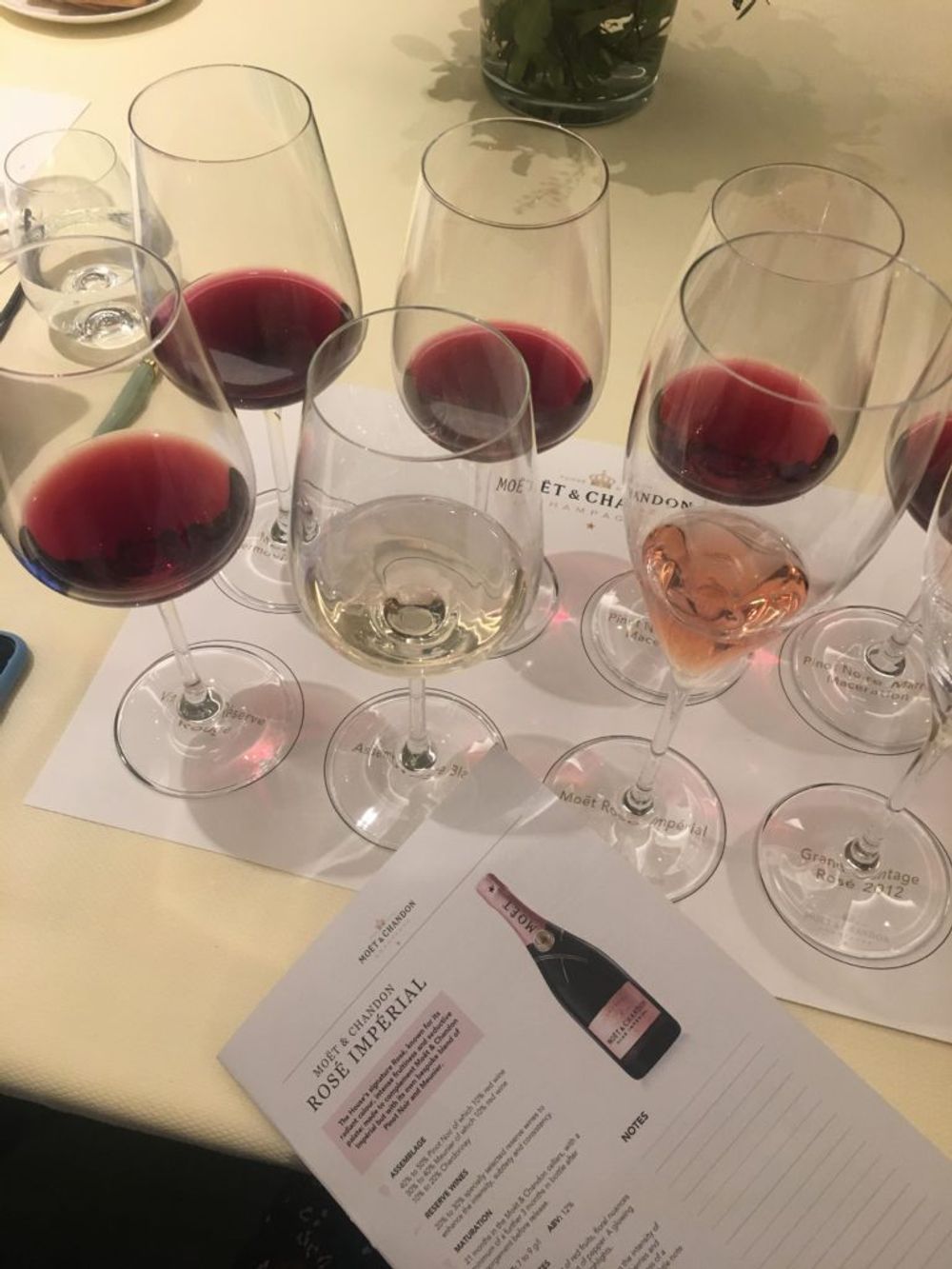
All of the reds shown were vinified in tank and had no contact with wood at all.
Glass 1: Pinot Meunier 2019 – thermovinified – from the western end of the Marne Valley: very fragrant, leafy, lifted, and so fresh, the wine almost seems raw. Very up-front, youthful and aromatic on the nose. The palate is gentle, light, pliable.
Glass 2: Pinot Noir 2019 – thermovinified – from the Aube: This has a rounder, riper aspect. There is something cherryish on the nose. The palate reveals lovely acid, soft structure and it seems more together, more subdued than the Pinot Meunier. Very juicy, slender, red-fruited.
Glass 3: Pinot Noir 2019 – macerated – from the Aube: The nose is rather reduced, initially even a little pongy. The palate is rather fine-boned in structure. Light-bodied, juicy, seems rounder and riper
Glass 4: Pinot Noir 2019 – macerated – from the Marne Valley: Fragrant, coniferous, fresh, vivid, slender, still some residual CO2. Lovely, structure, gentle depth, roundness, flesh, poise. With air even a hint of liquorice.
Glass 5: Reserve base wine: Pinot Noir 2018 – macerated – from the Aube: Has the compact body, that heart of fruit, that dash of cherry. With air, the nose wakes up to show some spiciness, some resonance. Gouez later reveals that it is from the same plot in Neuville-sur-Seine in the Aube as Glass 3 – the reductive 2019 Pinot Noir.
“The first two wines are exactly what we are looking for,” Gouez said. “But they are not made for ageing, we cannot keep them in reserve as they don’t have the structure, the weight and the colour stability to age for two or three years and their aromas are mainly thiols.” He noted, however, that once in a blend their colour is more stable. He said there are about twenty reds in that style and another twenty in the style of the second glass. The thermovinified wines are all destined for the non-vintage wines. “Here we play with different things: the variety, the origin, the process,” Gouez said. “This is not only about quality and quantity but also diversity. The more nuances we have at our disposal, the more options we have for blending. Nectar Rosé, Ice Rosé and Rosé Impérial have to be consistent.”
Once again he harked back to the past and said that historically there used to be two distinct rosé styles: one very vinous, very rich; the other very pale and light. When Rosé Impérial was first launched in 1996 the idea was “to produce a non-vintage Rosé every year, with consistency – and it was to be a synthesis of the two styles: as intense in colour as the vinous style but as light and tender as the pale style. Hence the use of Meunier and the use of thermovinification.”
“The wines are different, but with the reserves we can keep the style consistent, our aim is to make the best possible red wine,” he said. “Our plan is to have at least 1.5 years of red in advance, just in case we don’t produce any reds.” This, for instance, happened in 2017 when no red wines were made at all.
To allow us to make our own blends during the tasting, Gouez had also brought a white base wine. However, it was not the base that will be used for the Rosé Impérial but the base for the white Impérial. The two flagship wines use a different base. Gouez explains that the white base for the Rosé Impérial “has more asperity because the red wines are quite mild and soft, so we need a white base that has a little more structure and acidity to accommodate the reds.”
The base for the white Brut Impérial is composed of 42% Pinot Noir, 32% Pinot Meunier and 26% Chardonnay. 55% of the wines is based on 2019, 45% from the previous vintage 2018. It tastes fresh but mellow, was blended in January and is currently being bottled. When I added a good dollop of the 2019 Marne Valley macerated Pinot Noir, it became a beautifully rounded wine with a hint of spice. Currently both the white and the Rosé Impérial have a dosage of 7g/l.
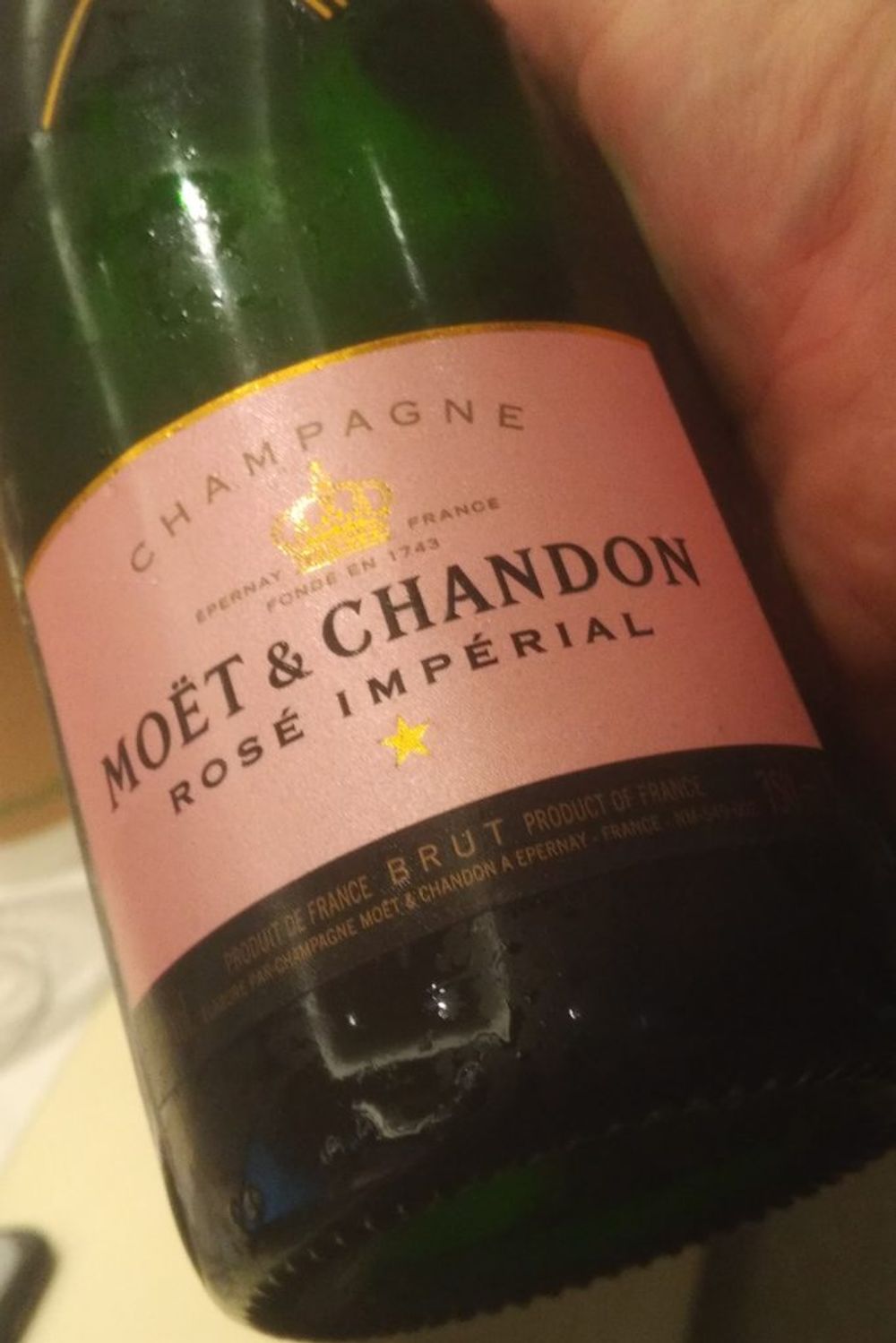
Now it was time to taste the finished Rosé Impérial: the primary notes that were so evident in the thermovinified reds reappeared – they give this bestseller its appetising, fruity nose. Gouez had made his case: he showed us all the elements that go into his rosé and revealed the techniques that make such quantities of consistent rosé Champagne possible.
Harnessing thermovinification to make such fruity reds is their competitive advantage. “It is for this reason that we made these choices that have been progressively refined and made more sophisticated,” Gouez said. His openness is to be commended.
Moët & Chandon Rosé Impérial NV– this current release has a 2016 base, was bottled in 2017 and disgorged August 2019, the dosage is 7g/l
Opening with a very fruity, ready, vivid nose, this reveals a touch of cherry and a hint of red apple. This is rather aromatic, primary and fresh. The palate is very light, juicy, foamy, easy and fresh. It comes with a soft body on light feet; it is refreshing while remaining rounded, pliable and supple.
